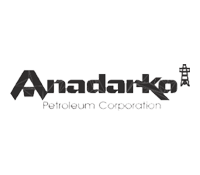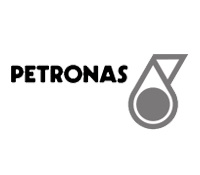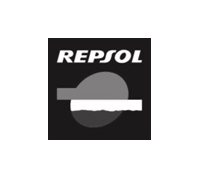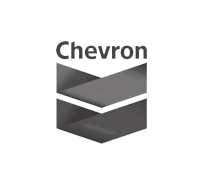Technical Information
AGI Passive Samplers for Passive Soil Gas Collection Description of Services
AGI uses a patented passive diffusion sampler for sampling air, soil gas, and water in its environmental, petroleum exploration, and mineral exploration markets.
Comparison of Geochemical Techniques
A description of the advantages of AGI Survey for Exploration over other surface geochemical techniques
A description of the advantages of AGI Survey for Exploration over other surface geochemical techniques
Microbiological Hydrocarbon Near-Surface Mapping and Ultrasensitive Detection
Microbiological hydrocarbon mapping is an inexpensive method for indirectly measuring hydrocarbons at the surface.
What’s the Story on Microseepage?
Many people have heard of macroseepage, but few people have heard about microseepage or understand the microseepage mechanism.
Many people have heard of macroseepage, but few people have heard about microseepage or understand the microseepage mechanism.
Amplified Geochemical Imaging: An Enhanced View to Optimize Outcomes
This article from the August 2006 issue of First Break magazine describes the benefits and methodology of the unique AGI Surveys approach in applications for environmental assessment and for petroleum and minerals exploration.
This article from the August 2006 issue of First Break magazine describes the benefits and methodology of the unique AGI Surveys approach in applications for environmental assessment and for petroleum and minerals exploration.
How to Install and Retrieve AGI Passive Samplers
A photo guide to the installation and retrieval of AGI Passive Samplers for soil gas sampling.
A photo guide to the installation and retrieval of AGI Passive Samplers for soil gas sampling.
Guidelines for Storage, Installation, and Retrieval of Air Samplng
Guidelines for Monitoring Well Sampling
Guidelines for Monitoring Well Sampling
General Guidelines for Survey Design and Sample Spacing Soil Gas and Subslab Soil Gas Sampling
Download the attached technical information detailing Undersampling, Grid Design, Software Tools, and more.
Download the attached technical information detailing Undersampling, Grid Design, Software Tools, and more.
Environmental Site Assessment Analytical Options
The AGI Survey analytical options include target compound suites comprised of common compounds of concern at sites impacted by VOCs, SVOCs, and PAHs.
The AGI Survey analytical options include target compound suites comprised of common compounds of concern at sites impacted by VOCs, SVOCs, and PAHs.
Downhole Geochemical Logging
Use AGI technology to directly characterize the composition of hydrocarbons vertically through various prospective sections by analyzing well cuttings. AGI’s Downhole Geochemical Logging (DGL) provides an ultrasensitive assessment of the hydrocarbons in a well. Download a comparison between DGL and Isotope data.
Use AGI technology to directly characterize the composition of hydrocarbons vertically through various prospective sections by analyzing well cuttings. AGI’s Downhole Geochemical Logging (DGL) provides an ultrasensitive assessment of the hydrocarbons in a well. Download a comparison between DGL and Isotope data.
Technical Notes:
Brochures:
Oil and Gas Exploration Brochure
Amplified Geochemical Imaging technology is an advanced geoscience tool that enables direct mapping of subsurface hydrocarbon charge.
Amplified Geochemical Imaging technology is an advanced geoscience tool that enables direct mapping of subsurface hydrocarbon charge.
Mineral Exploration Brochure
The Sampler allows for the direct detection of organic, organometal(loid) and inorganic compounds at the surface through hundreds of feet of post mineralization cover.
The Sampler allows for the direct detection of organic, organometal(loid) and inorganic compounds at the surface through hundreds of feet of post mineralization cover.
Environmental Site Assessment Brochure
Accurate site assessment plays a key role in determining whether subsequent efforts will be focused and cost-effective. This brochure details how using an AGI Survey during the early stages of assessment can bring accuracy to the conceptual site model, streamlining the entire remediation and monitoring process.
Accurate site assessment plays a key role in determining whether subsequent efforts will be focused and cost-effective. This brochure details how using an AGI Survey during the early stages of assessment can bring accuracy to the conceptual site model, streamlining the entire remediation and monitoring process.
Other Information:
Society of Petroleum Engineers: “Optimizing Lateral Placement and Production while Minimizing Completion Cost using Downhole Geochemical Logging”
Paper prepared for presentation at the Abu Dhabi International Petroleum Exhibition and Conference – UAE, 9-12 Nov 2015
Paper prepared for presentation at the Abu Dhabi International Petroleum Exhibition and Conference – UAE, 9-12 Nov 2015
Article in Digital Energy Journal: “Using Chemical Sampling to Decide Where to Drill”
New technology has been developed which helps de-risk hydrocarbon prospects through the identification of oil seeps too small to detect with the naked eye.
New technology has been developed which helps de-risk hydrocarbon prospects through the identification of oil seeps too small to detect with the naked eye.
Microseeps: The Only Real DHI? Article in GEO ExPro, Vol. 7, No. 5 2010
New technology has been developed which helps de-risk hydrocarbon prospects through the identification of oil seeps too small to detect with the naked eye.
New technology has been developed which helps de-risk hydrocarbon prospects through the identification of oil seeps too small to detect with the naked eye.
Economical Site Characterization Using High-Resolution Passive Soil Gas Sampling
Solid waste management units (SWMUs) at Arnold Air Force Base (Base), Tennessee, are undergoing a RCRA Facility Investigation (RFI) to evaluate the nature and extent of soil and groundwater impacted by releases of volatile organic compounds(VOCs) and mercury.
Solid waste management units (SWMUs) at Arnold Air Force Base (Base), Tennessee, are undergoing a RCRA Facility Investigation (RFI) to evaluate the nature and extent of soil and groundwater impacted by releases of volatile organic compounds(VOCs) and mercury.
VOC Location Investigation
The intent of the investigation was to locate VOC sources impacting the groundwater in an 800-acre (3.2 km2) area. The investigation used broad-based, less expensive screening tools to zero in on potential source areas, followed by more sophisticated and expensive technologies to pinpoint vadose zone source locations. Results of the investigation led to the discovery of a previously unidentified oil/water separator that contained liquids and sludge with high concentrations of trichloroethene (TCE).
The intent of the investigation was to locate VOC sources impacting the groundwater in an 800-acre (3.2 km2) area. The investigation used broad-based, less expensive screening tools to zero in on potential source areas, followed by more sophisticated and expensive technologies to pinpoint vadose zone source locations. Results of the investigation led to the discovery of a previously unidentified oil/water separator that contained liquids and sludge with high concentrations of trichloroethene (TCE).
Quantitative Passive Soil Gas and Air Sampling in Vapor Intrusion Investigations
Vapor intrusion, the intrusion of volatile and semi-volatile compounds into structures potentially creating a health risk to occupants, has become a dominant environmental topic. Vapor sampling of soil gas and air provides a direct measurement of these compounds in order to evaluate health risks. Passive sampling of air and soil gas, which involves the deployment of an adsorbent that collects compounds in the vapor state over time, can provide soil gas, sub-slab soil gas and air data simply, effectively and accurately for volatile- and semi-volatile organic compounds, under a wide range of challenging site conditions.
Vapor intrusion, the intrusion of volatile and semi-volatile compounds into structures potentially creating a health risk to occupants, has become a dominant environmental topic. Vapor sampling of soil gas and air provides a direct measurement of these compounds in order to evaluate health risks. Passive sampling of air and soil gas, which involves the deployment of an adsorbent that collects compounds in the vapor state over time, can provide soil gas, sub-slab soil gas and air data simply, effectively and accurately for volatile- and semi-volatile organic compounds, under a wide range of challenging site conditions.





















